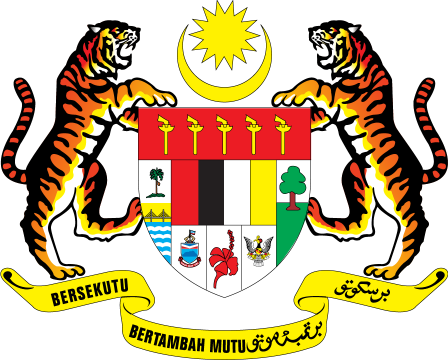Nutritional, Milk Quality And And Socio-economic Determinants That Are Crucial For Sustainable Dairy Goat Farming In Malaysia
Prof Dr. Goh Yong Meng
Professor
Faculty of Veterinary Medicine
Universiti Putra Malaysia
ymgoh@upm.edu.my
| NO |
NAME |
PROJECT TITLE |
RESEARCH DOMAIN (SUB DOMAIN) |
| 1 |
Prof Dr. Goh Yong Meng |
Metabolomic Manipulation Of The Rumen Ecosystem And Feeding Strategies To Enhance Milk Production And Fertility In Dairy Goats |
Natural and Cultural Heritage (Agriculture) |
| 2 |
Prof Dr. Jinap Selamat |
Safety Evaluation And Quality Assurance Of Goat’s Milk From Different Dairy Goat-feeding Strategies |
Pure and Applied Science (Biochemistry) |
| 3 |
Assoc. Prof Dr. Nolila Binti Mohd Nawi |
Economic Feasibility, Competitiveness Of Dairy Goat Production And Consumers' Preferences Of Goat's Milk |
Social Sciences (Business [incl. Accounting, Finance & Marketing]) |
3 years (01 December 2016 – 30 November 2019)

The milk production and herd sustainability of dairy goats in Malaysia are limited by the availability of feeds and the right feeding approach. Feeding technologies and their effects on rumen metabolomics are crucial determinants of milk production in dairy goat herds, and have profound effects on milk fats and lactose. Therefore, determining how the microbial balance and metabolomic changes in the rumen following feeding manipulation using a formulated feed, would allow us to understand the intricate processes that are central to goats' milk production. In this project, locally available feed resources, particularly crop residues, protein foliages and agro-products (empty fruit bunches (EFB)) were the main roughage and concentrates feeds. These products were treated and formulated to manipulate the rumen ecosystem to enhance intake, digestibility, nutrients availability as well as functional metabolites to increase milk production and quality of milk in goats.Our results showed that EFB is able to modify the fermentation characteristics of the rumen, and alter the amount of acetic and propionic acid available for the synthesis of milk fats and other nutrients. The effects are most apparent during early lactation when feed energy requirement is at its highest. These would have resulted in changes to the rumen microbial consortia and their digestive capabilities. The next step will be to monitor glucose transport and movement of other milk nutrients in the mammary glands. This project also investigated the effects of the rumen manipulation on the rumen microbes to improve the fatty acid profile in milk, particularly enrichment of the polyunsaturated fatty acid, omega fatty acid and conjugated linoleic acids. The key aim is to help improve not only the volume of daily milk production (which stands at 1.1 L/doe/day), but also enhances the quality of goat’s milk. Collectively, these would allow for continuous and sustainable production of goat's milk, enabling goat's milk farming as a potential tool to further improve the income and wellbeing of households.
- To improve the feeding technology used in the dairy goat industry to achieve high milk production.
- To develop analytical methods for the assessment of quality and safety hazard of goat's milk.
- To determine the societal, production and value chain factors that are crucial to determine the economic sustainability of the dairy goat industry in Malaysia.

-
Talent:
-
4 PHD
- Aliah Zannierah Mohsin (Graduated)
- Nur Liyana Akmal Harun (Graduated)
- Khazaie Elham (Graduated)
- Melissa Alina Yusoff (Graduated)
-
4 Master
- Noor Aidawati Salleh (Graduated)
- Nur Izzati Azman (Graduated)
- Muzammeer Mansor (Graduated)
- Alia Khalidah Binti Ismail (Graduated)
-
Publication:
-
Article in Indexed Journals
- Chemical and mineral composition of raw goat milk as affected by breed varieties available in Malaysia (2019) - SCOPUS
- Fourier Transform Infrared Spectroscopy and Multivariate Analysis of Milk from Different Goat Breeds (2019) - SCOPUS
- Generation of high affinity anti-peptide antibodies recognizing the native goat αs1-casein (2020) - SCOPUS
- Optimization of Protein Extraction Method for 2DE Proteomic for Goat's Milk (2020) - SCOPUS
- A highly selective two-way purification method using liquid chromatography for isolating native αS2-casein from goat’s milk (2020) - SCOPUS
- The use of plants by products as non-conventional feedstuff for livestock feeding with reference to rumen methanogenesis (2020) - SCOPUS
- Effects of polyphenol rich bamboo leaf on rumen fermentation characteristics and methane gas production in an in vitro condition (2020) - SCOPUS
- Dietary supplementation of papaya (Carica papaya l.) leaf affects abundance of Butyrivibrio fibrisolvens and modulates biohydrogenation of C18 polyunsaturated fatty acids in the rumen of goats (2018) - Web of Sciences
- In vitro and in situ evaluations of some tropical fruit peels as potential modifiers of rumen fermentation characteristics in goats (2020) - Web of Sciences
- The 4th Asian-Australian Dairy Goat Conference (2018) - Special Awards
- We have successfully produced polyclonal antibodies with high affinity towards goat αs1-casein using peptide as immunogen. The peptide design has successfully reduce cross-reactivity between goat αs1-casein and milk of different mammals.
- We reported a two-way liquid chromatography method for isolation of αs1-casein and αs2-casein from goat milk. The published method was highly selective which could isolate individual casein presented in milk.
- We developed ELISA for detection and quantification of goat αs1-casein using in-house produced antibodies and purified goat αs1-casein. The ELISA is highly specific towards the target protein and sensitive with low limit of detection and limit of quantification (0.063 and 0.21 μg/mL, respectively).



